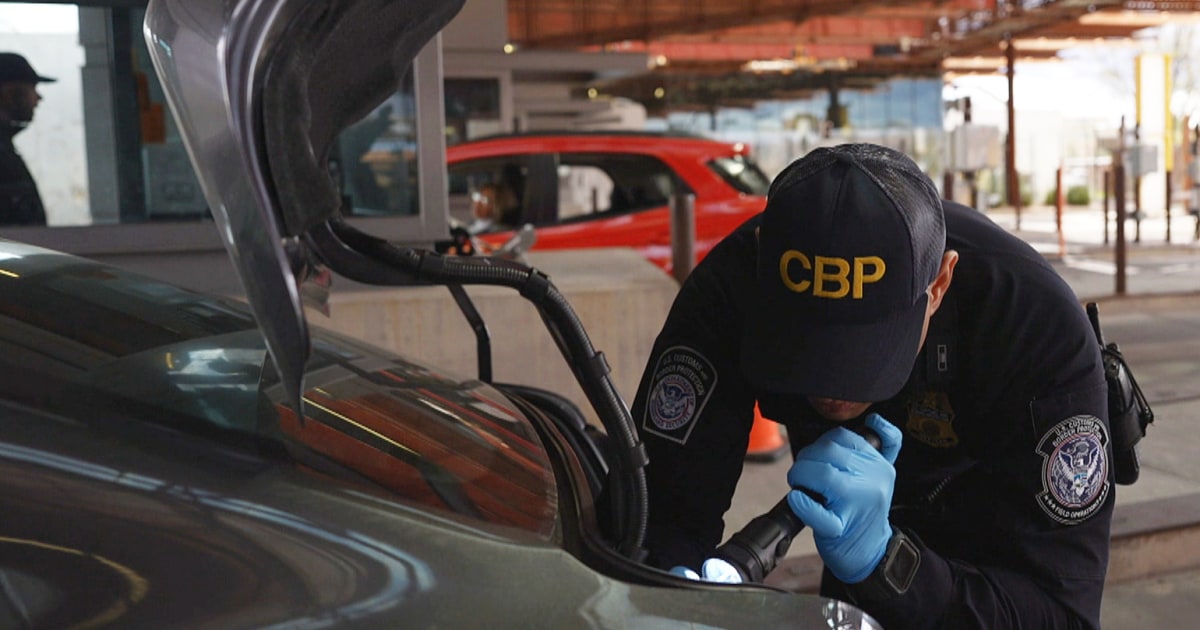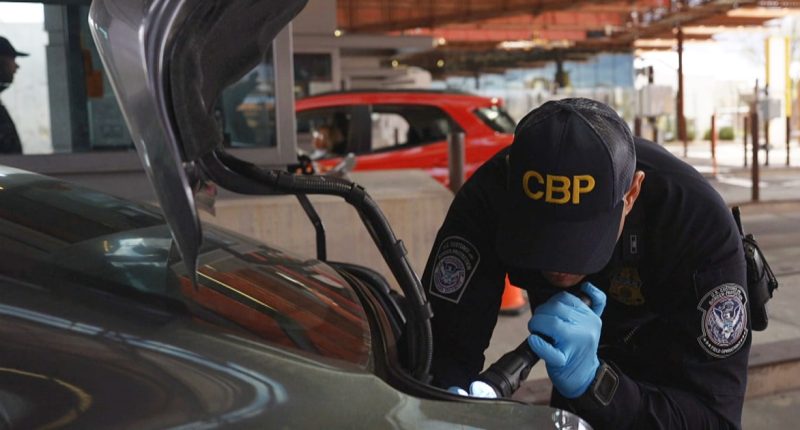
A CBP official speaking on background said the Biden administration’s “supplemental funding request would provide funding for civil works projects to allow for NII systems procured with previous-year funds to be installed.”
In Nogales, which has the new machines installed, Miller met officers watching scans of commercial trucks as they drove through the machines. But in the vast majority of border crossings by vehicles in Nogales and elsewhere, officers still depend on their intuition to tell them when something seems off.
Artificial intelligence would be likely to make fentanyl scanning more efficient, and CBP would like to use it more, Miller said.
With AI, the officers would be flagged to anomalies in trucks or changes since their last traffic stops in Mexico, such as different license plates, changes in weight or different drivers.
Former acting Homeland Security Secretary Kevin McAleenan sat at the helm of CBP in 2018 and 2019, right as fentanyl trafficking was beginning to spike.
“The vast majority of trade crossing the border is lawful. Over 98% has no violations of any U.S. laws. So they’re really looking for the proverbial needle in the haystack,” McAleenan said. “So what AI can do is tell them if this image that the officer is about to review meets what’s supposed to be in that container.”
McAleenan now runs Pangiam, a company based just outside Washington, D.C., that was recently awarded $21.5 million from CBP to build new technology that can use AI to detect anomalies in traffic coming across the border.
Asked why he didn’t spearhead the use of the technology when he was at DHS, McAleenan said developing it takes many years.
“We did see the increase coming. The efforts we undertook in 2018 reduced overdoses in 2019,” McAleenan said. But knowing what he knows now about fentanyl, “I would really have made an emphasis point about staying on top of this and staying in front of it.”
With increased use of AI, officers would still be in charge of making the final decisions to stop and search vehicles, but the AI could improve the speed and number of vehicles searched. Currently, Miller said, 20% of commercial vehicles are scanned and less than 5% of personal vehicles are scanned. By the end of 2025, he wants CBP to be able to scan 40% of personal and 70% of commercial vehicles.
So why not scan 100% of all vehicles if it saves a human life?
Miller said that with 1 million people crossing the U.S.-Mexico border every day, scanning every vehicle would “shut down legitimate trade and travel.”
Parents who have lost children, however, are calling on CBP to do more.
“I think the border needs to be closed. We’re a superhighway,” said Theresa Guerrero of Tucson, Arizona, who lost her 31-year son, Jacob, in 2020 after he ingested cocaine he didn’t know was laced with fentanyl.
Guerrero is working to get pictures of Jacob and three other young Arizonans who recently died from fentanyl on a billboard that motorists would pass as they drive from the border to Tucson.
“It makes me sad whenever I see a new name” of someone who has died, “especially in my home state,” she said. “It’s just senseless.”
Source: | This article originally belongs to Nbcnews.com










